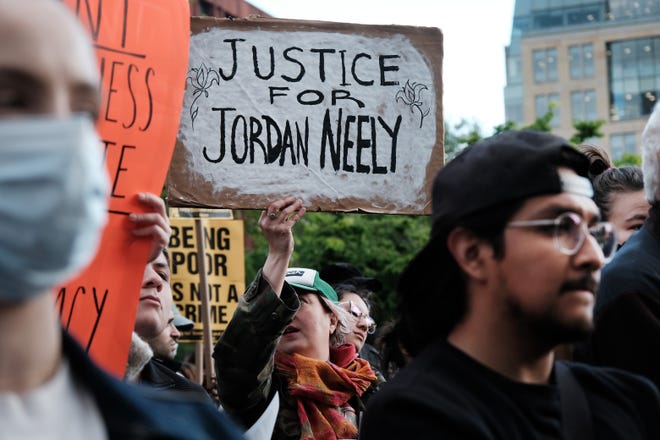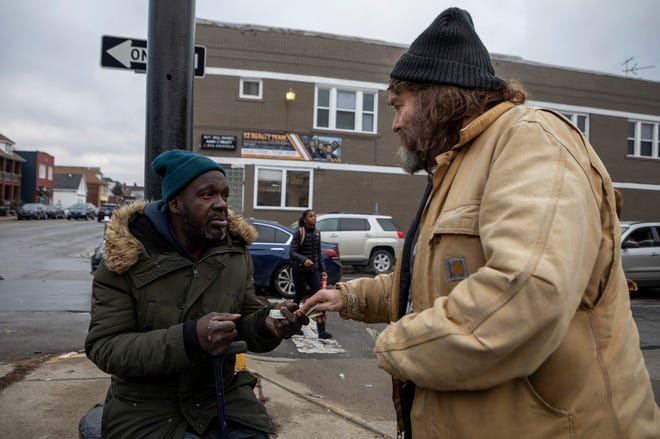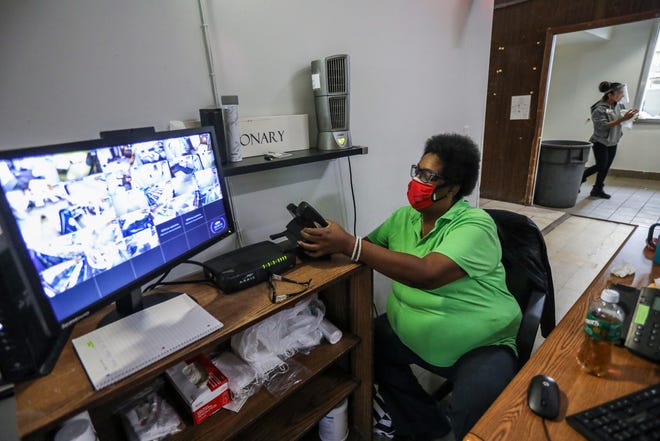By Mitch Albom
How should we react to people who are homeless? It’s an issue facing more and more Americans, as the problem keeps swelling, particularly in our cities.
One reaction is to run from the word. Using “homeless,’’ or specifically “the homeless,” has been assailed by activists as insensitive. Alternative suggestions range from “the unhoused” to “the unsheltered” to “urban campers” or even “curbside community.”
Stop. The word is not the problem. And debating it is a diversion from the serious issue it represents, and how we are — or aren’t — responding to it.
One major response is fear. People see a homeless person, they cross the street. They avoid. If that person is screaming, muttering or threatening passersby, the fear increases.
Recently, in New York City, a homeless man with a long criminal record named Jordan Neely reportedly made threats to passengers in a subway car and talked about not caring if he died. One of the passengers, a former Marine, assumedly out of fear that the man would harm others, put Neely in a chokehold.

The former Marine has now been charged with manslaughter.
There’s nothing good about either of those outcomes.
Hard to find the right response
Another reaction to homelessness is compassion. This is the driving force behind the countless shelters, rehab programs, outreach groups and faith-based initiatives across the nation that help homeless people find their way to a better and healthier existence.
But even compassion has its controversy. Some cities, under the premise of being compassionate, have treated homelessness less as a problem than as a sacred existence, one that should be welcome anywhere and not interfered with.
Thus makeshift tents, open-air drug use, even urination or defecation is tolerated in areas that were previously devoid of such issues. Sometimes, these homeless encampments spring up near expensive homes that owners purchased in the hopes of living in a “nice” neighborhood. To complain however, is to be branded a bigot or a privileged ogre.
Cynicism is also a common response to homelessness. “These people don’t want to work” or “if you give them money, they’ll just buy drugs or alcohol.” Such sentiments make people walk past men sleeping in the street, or drive past women begging on a corner with a cardboard sign.

Jimmy Doom, actor, writer, and bartender gives money to his friend Anthony who experienced homelessness in Hamtramak on January 19, 2023. Jimmy formed a friendship with Anthony and helps him when he can.
Another reaction is anger. People are fed up. They don’t want their families constantly exposed to this plight. In Seattle, where homeless encampments are rampant, citizens have been complaining that their children, on the way to school, have to walk past drug addicts sometimes shooting up right in front of them.
Meanwhile at our southern border, a record number of migrants crossed last week with the expiration of Title 42, and, almost by definition, none of them have homes. Consequently, many are living in the streets of border cities like El Paso, Texas, leaving the permanent residents angry and resentful.
Ways to help
So what is the proper reaction to homelessness in America, which has been ticking up every year since 2016? Fear? Compassion? Cynicism? Anger?
How about we begin with “understanding”? I don’t mean understanding as a euphemism for embracing homelessness. I mean understanding as in who are these people, and what is causing their status?
Now, you have the right to ask “What do you know about it?” Well. I have been working with the homeless population since 2006, when I founded SAY Detroit in direct response to how we were treating homeless people during the Super Bowl. Our numerous charities have operated and funded programs for people in various states of homelessness for the last 17 years.
I also operate an orphanage in Port-au-Prince, Haiti, where most of our 60 children come from homeless backgrounds.
This work has not only exposed me to countless members of the homeless population, but to many great people who work with them. One is Chad Audi, the CEO and president of the Detroit Rescue Mission Ministries, whose programs take care of 2,200 homeless and substance-abuse victims every night in our city.

Sherylle Garner 56, of Detroit works as a case manager at the Detroit Rescue Mission Ministries Mack warming center on November 21, 20221.
So I asked Chad first to break down the homeless population, and how they got that way.
“I would estimate around 50% are dealing with mental health issues,” he said. “About 30% are homeless due to drug and alcohol abuse. And about 20% are homeless due to an economic setback.”
While there are, of course, crossovers, the easiest segment to help, Audi said, is the smallest one. Those who became homeless due to a job loss or a workplace issue often just need a stopgap to get back on their feet. A brief stretch in shelter. A retraining program.
The hardest group to help is the largest segment: those with mental health issues.
“I would break this group in two,” Audi said, “those with moderate issues who can function well if their medication is prescribed and taken, and those with severe issues who may require to be in institutions.”
Audi laments that the government does not invest nearly enough in the mental health area. Instead, he said, it tends to want to build housing and more housing.
But housing people who “are not ready to be homeowners” often fails, Audi said, and ultimately results with those people back in the street.
Getting to the root of the issue
Audi also confirms that there is a chunk of the homeless population that does not want help, no matter what is offered.
“The chronically homeless often won’t go anyplace where you have control or rules. They usually are dealing with some mental health issues, or they don’t want to be told they can’t use drugs or alcohol. They don’t want a structured environment.”
The challenge is to help those who are open to help, with programs that address the core problems.
For many years, I have attended The DRMM’s “graduation” ceremonies, where those who have completed treatment and training programs, often taking up to two years, are given diplomas and celebrated for the work they put in to get back on their feet.
Temporary housing enabled them to improve, and readied them for a job and independence.
Katie Oswald hands out sandwiches in the homeless encampment known as “The Zone” in Phoenix, AZ on May 8, 2023. She does it with thoughts of her son who had lived in “The Zone”.
But such programs take time and money. And willing participants. Not every homeless person fits that bill. People need to be honest about that. Just as we need to be honest that homelessness is not a one-size-fits-all issue. People become homeless for various reasons. And certain solutions makes sense in one case, but not in another.
Ultimately, a society’s response to the homeless issue will depend on its viewpoint. In California, where housing prices are astronomical, some have taken to opening parking lots all night to allow those who don’t have housing to live in their cars. Some folks think this is brilliant. Others, like Audi, believe it perpetuates the problem.
“We have to stand up for the truth. The truth is a homeless person usually has issues that made them homeless. No one is saying homeless people are bad people, or second-class citizens. But most do have issues.
“Our job is to change government policies so we can attract homeless citizens to programs where they can get help and get a safe place to go. Where they can get back on their feet.”
What’s your response to a homeless person? Hopefully, before cynicism, anger, violence or misplaced over-compassion, it starts with understanding who that person is sleeping in the street, or lying on a bench, or begging on a corner, and what brought them there.
If we’re not realistic about the problem, we can’t expect much from our solutions.
Contact Mitch Albom: malbom@freepress.com. Check out the latest updates with his charities, books and events at MitchAlbom.com. Follow him on Twitter @mitchalbom.





